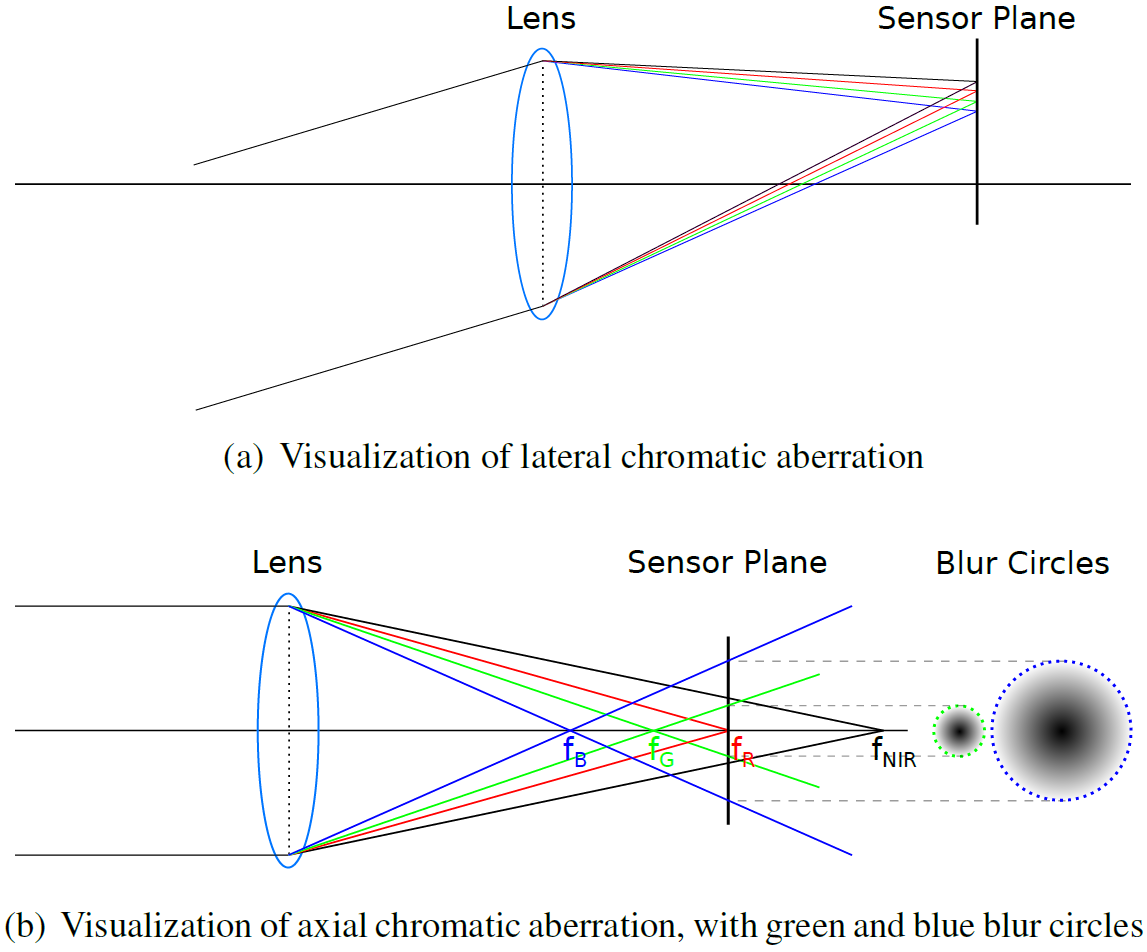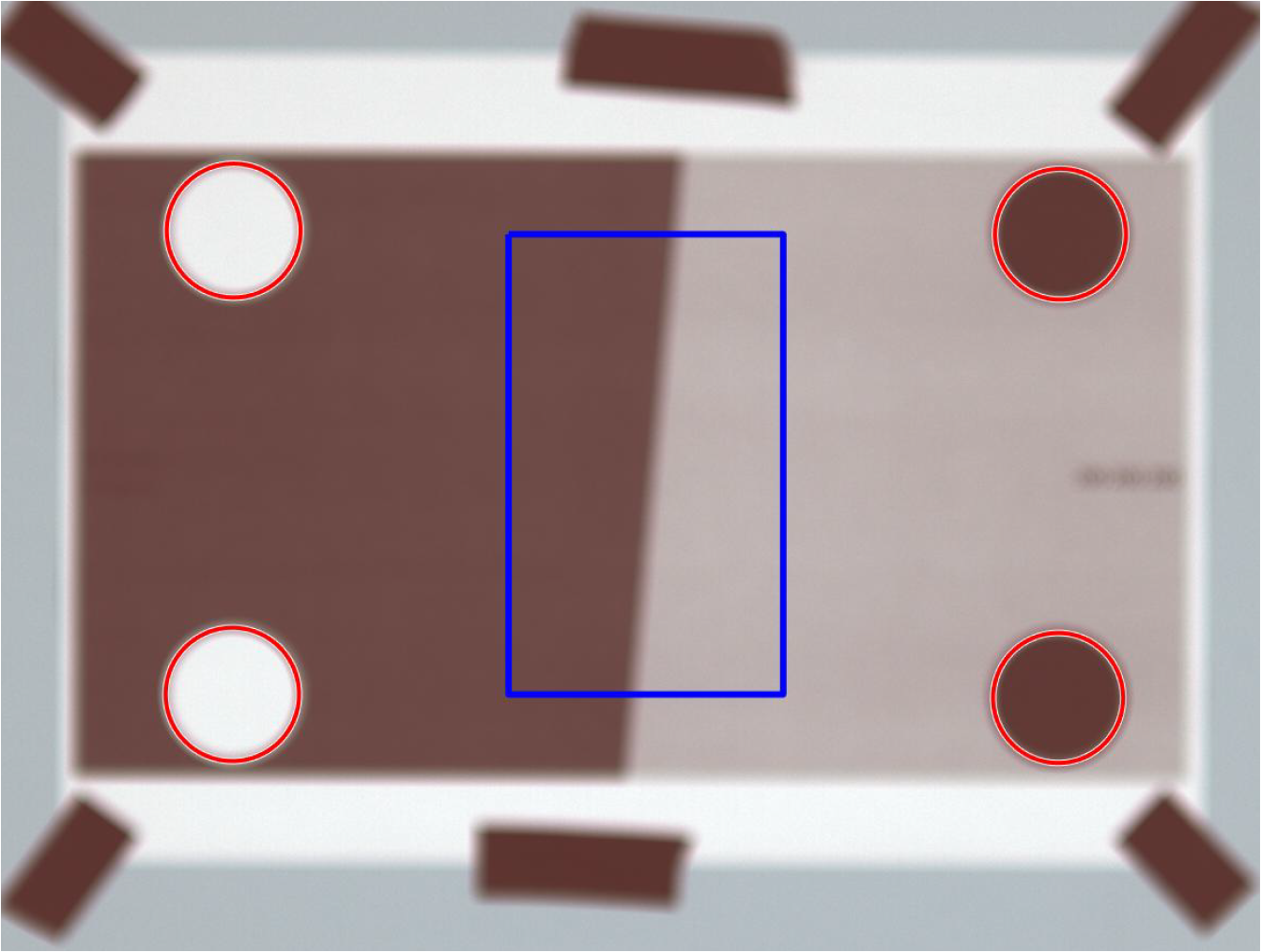AAM
AAM stands for Axial Aberration Magnitude. It measures the degree of axial chromatic aberration caused by the lens. Chromatic aberrations are caused by dispersion, as the refractive index of a lens is wavelength dependent. They can be split into two categories: lateral and axial chromatic aberration. The former manifests itself visually in images through color fringing, while the latter does so through color spilling. Both chromatic aberrations are visualized below:

Measurement Procedure
We use a slanted edge, printed with a regular printer, paper and ink, where the edge is between two shades of grey (instead of black and white) to reduce saturation risks. The 4 disks, highlighted with red circles are placed to automate the process of finding the edge region, highlighted with a blue box. We use the built-in disk detection algorithm of MATLAB, then use the geometry and colors of the 4 disks to filter-out incorrect detections. This is important because the slanted edge also needs to be captured at high degrees of defocus, making the automated disk detection challenging.

We capture this edge at different camera-object distances, and compute defocus blur for every wavelength channel and every distance by measuring the variance of the corresponding Gaussian PSF. We then propose a metric that compares defocus blur shifts across any number of spectral channels. This evaluation of axial chromatic aberration is called the AAM metric, and all details can be found in the paper “AAM: An Assessment Metric of Axial Chromatic Aberration”.
A link to the implementation codes published on GitHub as well as infoscience can be found in the paper.
References: